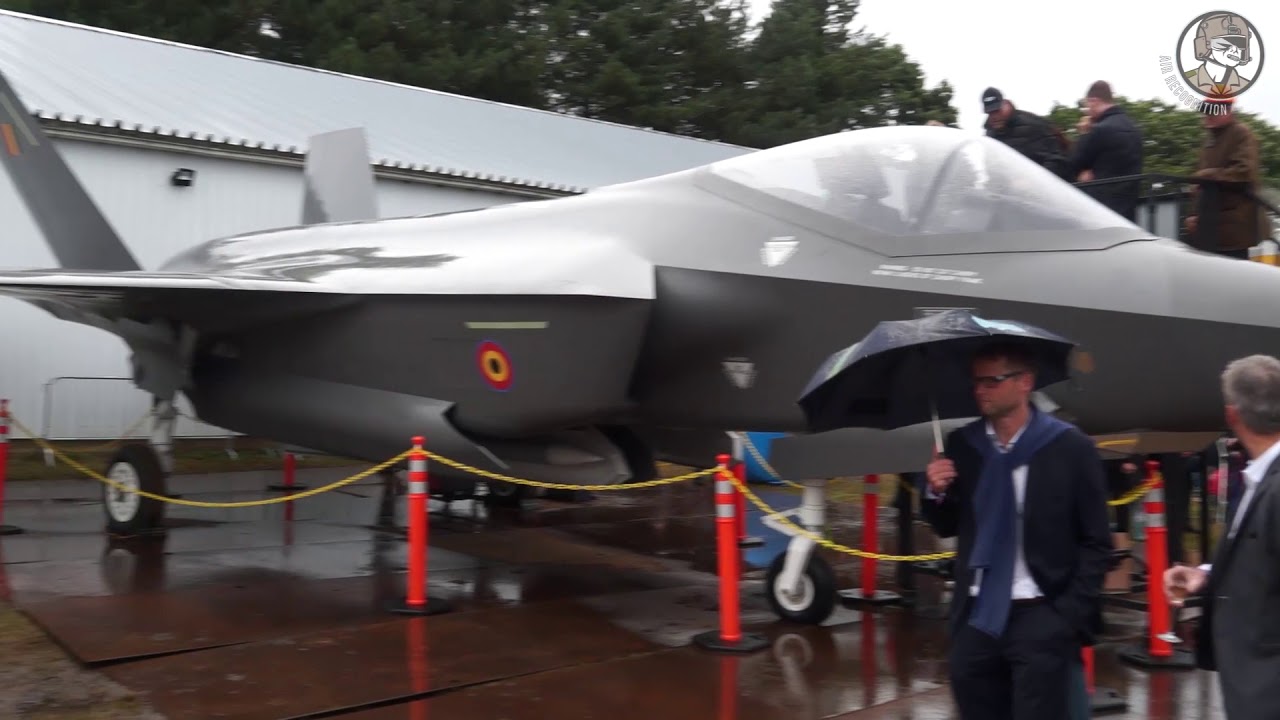China’s Chengdu J-20 and FC-31 Fighter Jets Emerge as Rivals to US F-35 in Military Aviation Advancement.

China’s advancements in defense aviation have led to the development of aircraft capable of rivaling the US F-35 Lightning II, with the Chengdu J-20 and the Shenyang FC-31 standing out as the primary contenders.

The Chinese J-20 and FC-31 fighter jets are the main rivals of the American F-35. (Picture source: U.S. DoD and Wikimedia)
The Chengdu J-20, known as the “Mighty Dragon,” represents China’s foray into fifth-generation fighter technology. Entering service in 2017, the J-20 boasts advanced stealth capabilities designed to evade radar detection, which is critical for modern air combat. Its stealth features and internally carried weapons make it difficult for enemy systems to detect and target. The J-20 incorporates a canard-delta configuration, which aids in achieving both agility and low observability. Its airframe is designed to minimize radar cross-sections extensively using radar-absorbent materials and angled surfaces. Initially powered by Russian AL-31F engines, the J-20 is transitioning to the indigenous WS-10C engines, and eventually, the WS-15 engine is expected to provide supercruise capability (sustained supersonic flight without afterburners).
The J-20 twin engines provide substantial speed and maneuverability, essential for evasion and close-quarters dogfighting. Equipped with advanced avionics, such as an Active Electronically Scanned Array (AESA) radar, the J-20 excels in tracking and targeting adversaries. The avionics suite includes advanced data links for network-centric warfare, infrared search and track (IRST) systems, and electronic warfare capabilities, enhancing its situational awareness and survivability in contested environments. The J-20’s design also incorporates long-range strike capabilities, allowing it to engage targets from significant distances, which is crucial for modern air dominance. The aircraft’s weapons bays can carry a variety of air-to-air missiles, such as the PL-15 long-range missile and PL-10 short-range missile, providing versatility in combat engagements.


-


The J-20 is China’s advanced fifth-generation stealth fighter jet. (Picture source Wikimedia)

In addition to the J-20, the Shenyang FC-31, known as the “Gyrfalcon,” or J-31, is another significant player in China’s aerial strategy. Although still in the development and testing phase, the FC-31 aims to offer a competitive alternative to the F-35, especially regarding export potential. The FC-31 features a stealth design with a reduced radar cross-section and internal weapons bays, enhancing its ability to remain undetected. The aircraft utilizes a twin-engine configuration with Russian RD-93 engines, although future iterations might include Chinese-made engines for improved performance. Its aerodynamic design focuses on stealth and agility, making it suitable for various combat roles.
The FC-31 is engineered to perform multiple roles, from air superiority missions to ground attacks, showcasing its versatility. This multirole functionality, coupled with its potential affordability, makes the FC-31 an attractive option for countries looking to modernize their air forces without the high costs associated with the F-35. The FC-31 has modern avionics, including AESA (Active Electronically Scanned Array) radar, advanced electronic warfare systems, and data links for network-centric operations. It can carry a range of weapons in its internal bays, such as the PL-15 and PL-10 missiles, similar to the J-20, enhancing its combat effectiveness.
Both the J-20 and FC-31 exemplify China’s commitment to advancing its military aviation capabilities. The J-20, with its stealth, speed, and advanced systems, presents a direct challenge to the F-35’s air superiority. Meanwhile, the FC-31, aimed at providing a versatile and cost-effective alternative, underscores China’s strategic push to expand its influence through military exports. Together, these aircraft highlight the dynamic and competitive landscape of modern aerial warfare, as China seeks to match and potentially surpass the technological edge traditionally held by the United States.


The FC-31 is China’s multirole stealth fighter jet designed for export. (Picture source Wikimedia)

The American F-35 Lightning II, developed by Lockheed Martin, offers several technical advantages over the Chinese J-20 and FC-31, solidifying its status as a premier fifth-generation fighter. One of the most significant advantages is its advanced stealth technology. The F-35’s design incorporates radar-absorbent materials and a unique airframe shape, significantly reducing its radar cross-section. This stealth capability is enhanced by the aircraft’s sophisticated software that manages emissions and ensures minimal detectability. In comparison, while the J-20 and FC-31 also feature stealth designs, the F-35’s integrated approach to stealth, combined with its extensive testing and refinement, gives it an edge in remaining undetected in highly contested environments.
Another critical advantage of the F-35 is its advanced sensor and avionics suite. The aircraft has the AN/APG-81 AESA radar, which provides superior tracking, targeting, and electronic warfare capabilities. The Distributed Aperture System (DAS) gives the F-35 360-degree situational awareness, allowing pilots to detect and engage threats from any direction. The Electro-Optical Targeting System (EOTS) integrates targeting, infrared search and track, and laser designation capabilities. This comprehensive sensor fusion system surpasses the capabilities found in the J-20 and FC-31, providing F-35 pilots with unparalleled situational awareness and combat effectiveness.
The F-35 also benefits from its advanced electronic warfare and communication systems. The aircraft’s mission systems, developed with extensive interoperability in mind, enable seamless integration with allied forces. The F-35’s ability to gather, process, and share information in real-time provides a decisive tactical advantage. This network-centric warfare capability ensures F-35 pilots can make more informed decisions faster than their adversaries. In contrast, while the J-20 and FC-31 have made strides in electronic warfare and data link technologies, the F-35’s comprehensive and mature systems integration sets it apart.
Moreover, the F-35 boasts superior versatility and multirole capabilities. Designed to perform a wide range of missions, from air superiority and ground attack to intelligence, surveillance, and reconnaissance (ISR), the F-35 excels in various combat scenarios. Its capability to operate from conventional runways, aircraft carriers, and short takeoff and vertical landing (STOVL) environments further enhances its operational flexibility. The J-20, primarily designed for air superiority and long-range strike, and the FC-31, aimed at providing a multirole platform for export, do not match the F-35’s comprehensive mission adaptability and deployment options.
Regarding logistics and sustainment, the F-35’s advanced Autonomic Logistics Information System (ALIS) streamlines maintenance and operational planning, ensuring higher availability and lower lifecycle costs. This system provides predictive maintenance capabilities and comprehensive fleet management, crucial for sustained operations. While China is undoubtedly working on improving the maintenance and support infrastructure for the J-20 and FC-31, the F-35’s established and sophisticated logistics framework provides a significant operational advantage.





